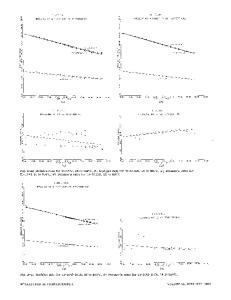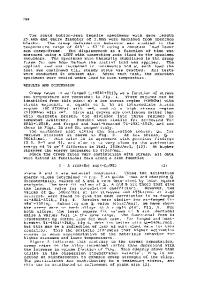The Alloying of Titanium Aluminides with Carbon
- PDF / 1,573,529 Bytes
- 6 Pages / 420.48 x 639 pts Page_size
- 53 Downloads / 727 Views
THE ALLOYING OF TITANIUM ALUMINIDES WITH CARBON G. Cam, H.M. Flower, and D.R.F. West Department of Materials, Imperial College, London, England. ABSTRACT An investigation has been made on the constitution of the Ti-Al-C system in the range of 15-55 at% Al and of 0.1-1.0 at% C and the temperature range of 1250-450 oc. Equilibria including three compounds TiC, Ti 3A1C, and Ti 2AIC have been studied and transmission electron microscopy (t.e.m.) observations of ordering reactions in azhave been made. INTRODUCTION Titanium aluminides, namely Ti3 AI (a2 ) and TiAI (y) offer much greater oxidation and creep resistance, and lower density than conventional 'near a' alloys such as IMI-829 or even IMI-834. However, they suffer from very poor ductility at room temperature. Recently, numerous studies have been carried out aiming to improve their ductility [1-3]. Alloying of the aluminides to refine grain structure and introduce fine precipitates which disperse slip, is a potential route to producing some ductility with adequate high temperature properties. Among alloying elements, carbon is of interest for achieving microstructural modifications, such as dispersoid formation, and hence property improvement. In the present work, the effect of carbon on the constitution and microstructure of titanium aluminide alloys was studied. Carbon additions varying from 0.1-1.0 at% were made at different aluminium contents (ranging from 15 to 55 at%). The alloys were studied in the as-solidified condition and after heat treatments in the range of 1250-450 oC. The work has included the use of t.e.m to investigate detailed microstructural features, and thereby to extend previous constitutional data for the system [4, 5]. EXPERIMENTAL PROCEDURE Alloys were prepared by arc-melting under argon atmosphere in the form of 25 g ingots, using high purity materials (Ti -99.5, A] -99.99 %, TiC -99.5 %; the average size of carbide powders
was -10 microns). Holes were drilled in titanium in which to place TiC powders, and aluminium pieces were put on the top to avoid loss of the carbide powder during melting. The weight loss of all elements during melting was minimal (only -0.2 %); weighed compositions of alloys were therefore accepted as nominal compositions (in at%) given in Table 1. Aluminium and titanium contents, determined by x-ray ED analysis, were in good agreement with the nominal compositions. Alloys were not analysed for oxygen, but from previous work the oxygen content is expected to be < -1500 ppm.
Samples were wrapped in Mo foil and sealed in quartz capsules under argon prior to any heat treatment to minimize oxidation. Argon was also circulated through the furnace during heat treatments at temperatures higher than 10000C as an additional precaution against oxidation. All the alloys were homogenized at 1250 OC for 24 hrs and water quenched prior to subsequent heat treatment. Homogenized samples were heat treated at 1050 and 750 oC, for 24 hrs and one week respectively followed by water quenching. The 26Al1C alloy was also annealed at 450
Data Loading...











